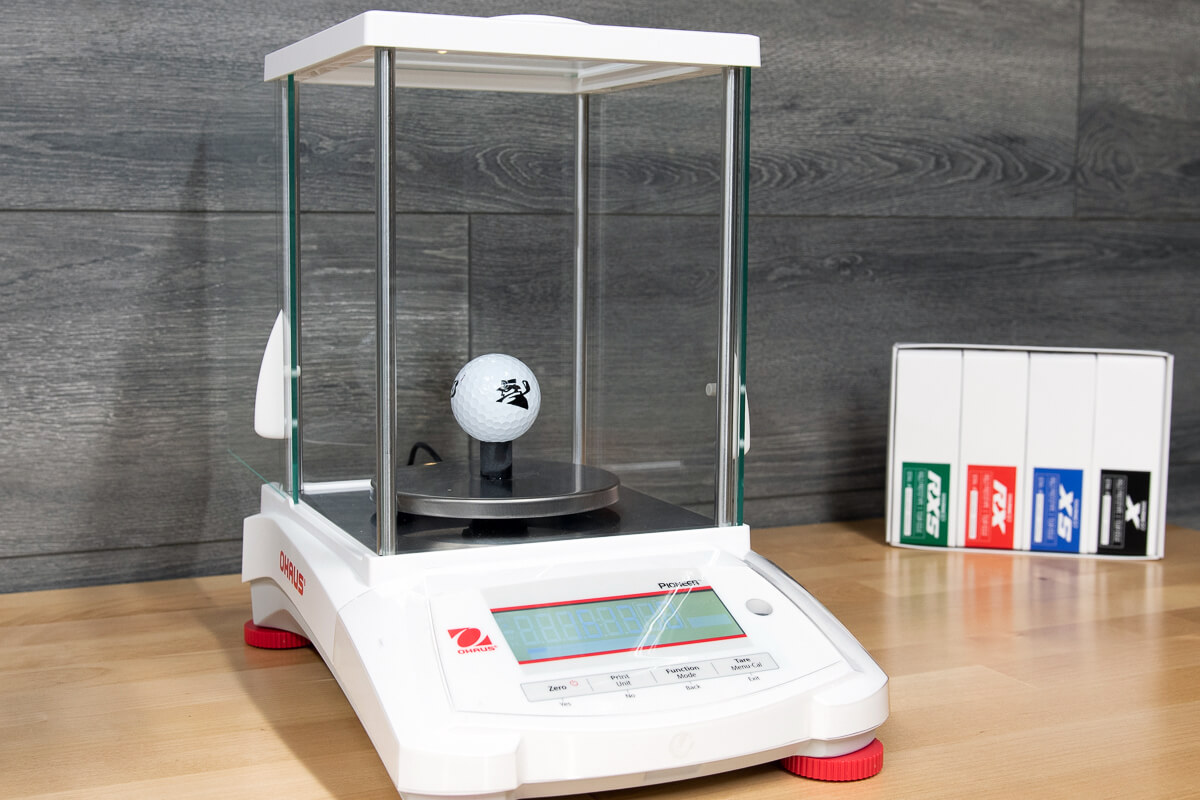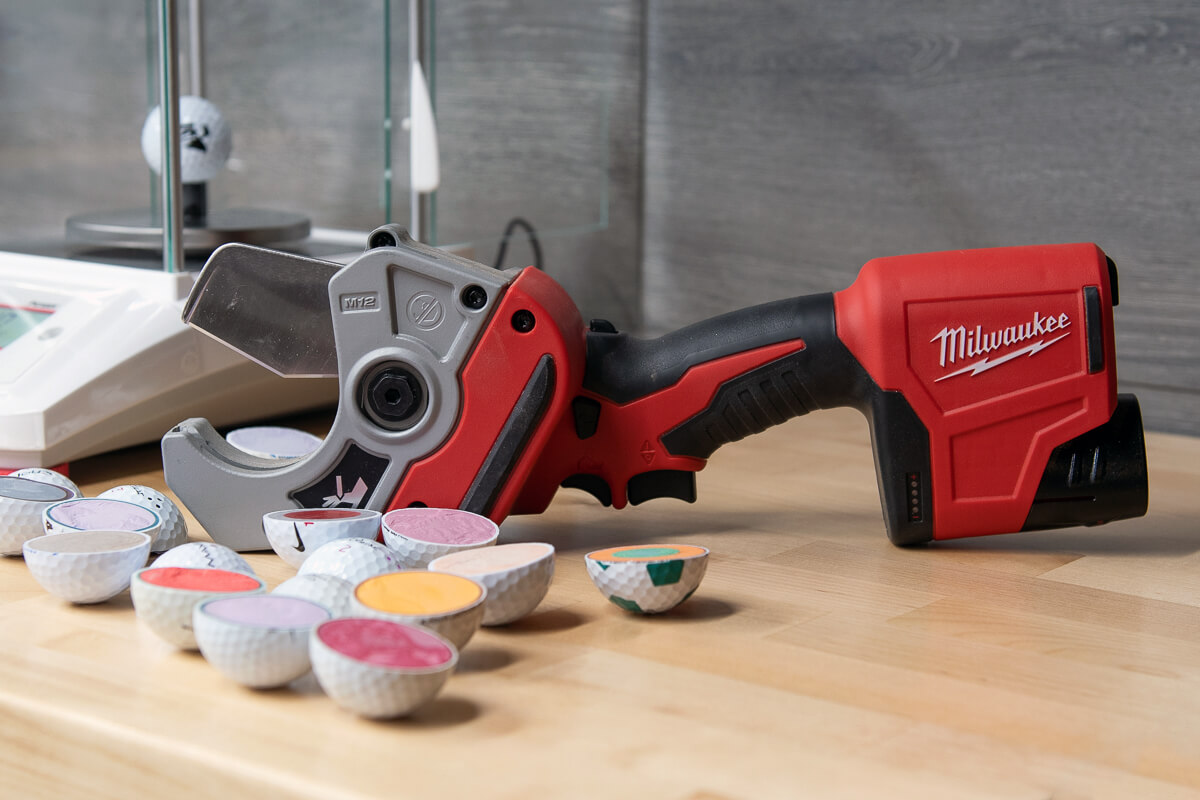You’re probably familiar with our annual Most Wanted tests and Buyer’s Guides. Their purpose is to help golfers identify the best products for their game. While the goal remains the same, today we’re announcing a different kind of testing program.
It’s called MyGolfSpy Ball Lab. I haven’t been this excited about an initiative since we committed to large-scale, data-driven golf club testing nearly a decade ago. In some respects, Ball Lab is even more exciting because we’re seeking to uncover the kind of things that are almost impossible for golfers to discover on their own.
Quantifying Golf Ball Quality
One of the many insights gleaned from last year’s ball test is that every ball has two sets of specifications. Most every golfer focuses on the performance spec: speed, launch, spin – stuff we can all see to some degree. Seldom, it seems, do golfers consider the quality spec. It’s the part of the equation that speaks to the build quality; how well a ball is made and whether the manufacturer can produce that same ball over and over again. It’s the stuff that’s literally hidden beneath the cover.
That’s where Ball Lab comes in. It represents our effort to better quantify the quality and consistency of the golf balls on the market today. The ultimate goal of Ball Lab is to provide you with much-needed and deserved independent clarity into the quality side of the ball discussion.
We’ve spent months working behind the scenes to make this happen. We’ve consulted with leading ball manufacturers to understand what’s important, how to look for it, and the tools required to do the job right. We’ve spent hours learning from the man who makes most of our gauges. It has already been an experience and we’re just getting started.
We believe golfers want to know which brands make the highest quality, most consistent golf balls and which brands are peddling sub-par product. We’re going to sort it out for you.
Ball Lab Tooling
Out of the gate, the MyGolfSpy Ball Lab will consist of five tools.
If it proves successful and the demand is there, we’ll look to expand our testing capabilities. I already have some ideas. Here’s the list of what we have and how we plan to use it.
Model 55-M Golf Ball Compression Tester
While there’s no standard-issue compression tester, the OK Automation 55-M is widely used across the ball industry. Not only will it allow us to identify which balls offer the most consistent compression by measuring every ball with the same tool, we can reliably compare compression across models and brands without relying on OEM numbers. Who really makes the slowest softest ball in golf? We’ll find the answer.
Model 95-M Diameter Measurement Gauge
Effectively a size gauge, the 95-M will allow us to take diameter measurements and determine roundness. If a brand struggles to produce golf balls that are actually round, we’re going to tell you about it.
Ohaus Pioneer PX 323 Precision Electronic Balance
Accurate to within 0.001 g, we’ll use the scale to verify weight conformity while also tracking the weight consistency of each model we test.
Milwaukee M12 Cordless PVC Cutter
The workhorse of #FindItCutIt, we’re going to keep using the M12 to cut golf balls. We’ll cut a random selection of balls from each dozen and grade them for centeredness and layer concentricity.
Tigh Tolerance 1.680″ NO-GO Gauge
The custom No-Go gauge from Zero Check is used to determine if the ball meets the USGA’s minimum size requirement.
Consistent Measurement
To maintain consistent environmental conditions for testing, balls will be stored in a temperature-controlled humidor at 70 degrees with 50-per-cent relative humidity.
Gauges will be calibrated before each ball model is tested.
Retail Balls Only
To ensure everything is on the up and up and nothing gets pre-sorted on its way to us, MyGolfSpy will purchase all of our test balls at retail. The plan is to test three dozen of each model. All 3 dozen will be cut for further analysis.
You can expect some other cool experiments from the Ball Lab along the way.
We’re in the process of sourcing golf balls for the first round of testing. It’s going to take us a little bit of time to get everything in, acclimated and measured. Before we start rolling out MyGolfSpy Ball Lab reports, we need to build our database so we can accurately classify balls.
While that’s happening, you can expect us to trickle out some of what we find.
We can’t wait to get started.
Editor’s Note: This post has been upgraded to reflect the latest changes to our testing equipment.




















Kyle Sinclair
4 years ago
Tony, you might as well trash this years test & start on next year…..
It is September already…. ????♂️